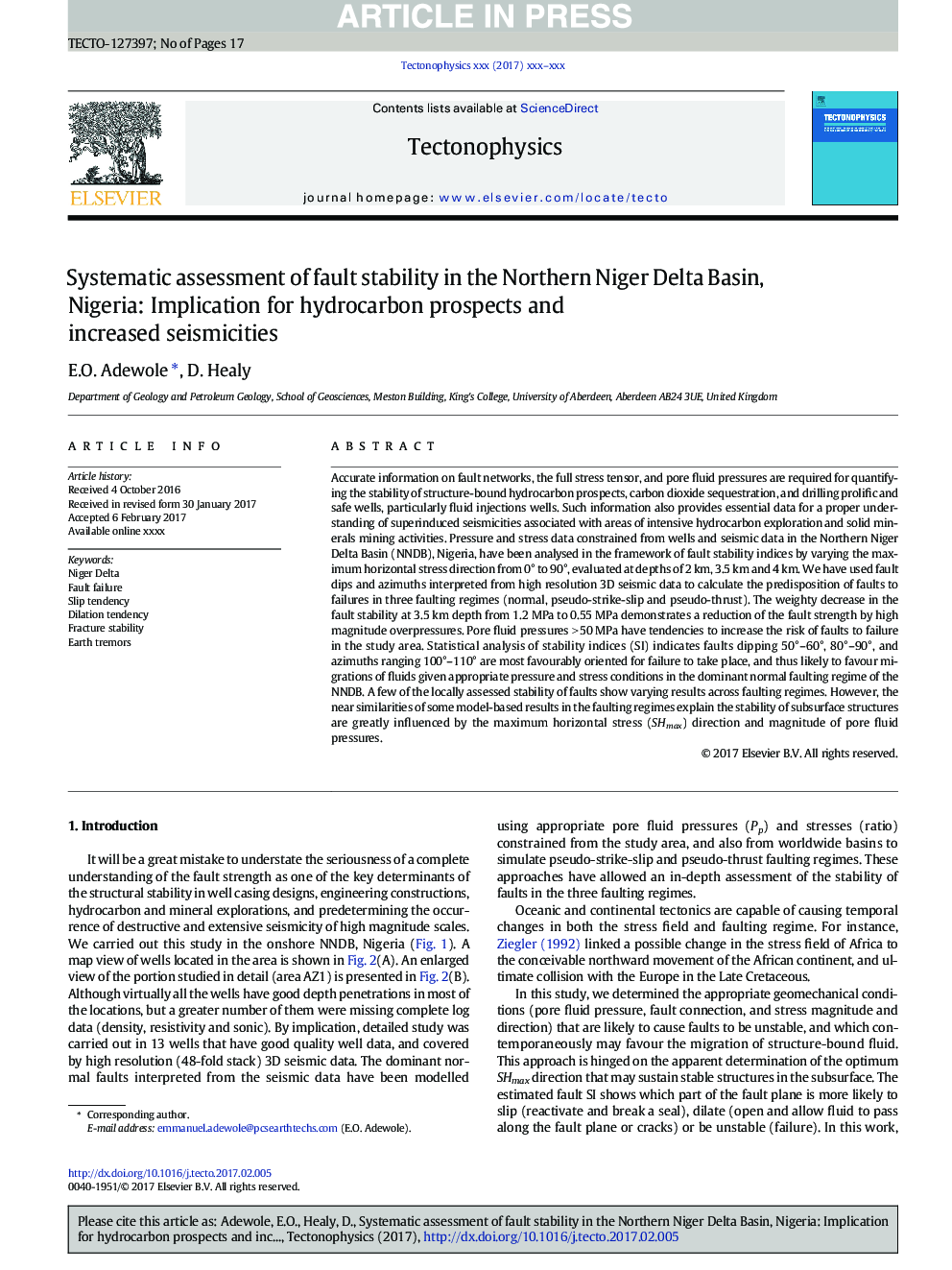| کد مقاله | کد نشریه | سال انتشار | مقاله انگلیسی | نسخه تمام متن |
|---|---|---|---|---|
| 5781749 | 1636703 | 2017 | 17 صفحه PDF | دانلود رایگان |
عنوان انگلیسی مقاله ISI
Systematic assessment of fault stability in the Northern Niger Delta Basin, Nigeria: Implication for hydrocarbon prospects and increased seismicities
ترجمه فارسی عنوان
ارزیابی سیستماتیک پاکسازی خطا در حوضه شمال غربی نیجر، نیجریه: اهداف چشم انداز هیدروکربن و افزایش لرزه نگاری
دانلود مقاله + سفارش ترجمه
دانلود مقاله ISI انگلیسی
رایگان برای ایرانیان
کلمات کلیدی
دلتا نیجر، شکست گسل، گراش لغزش، گرایش تمایل، پایداری شکستگی، لرزش زمین
موضوعات مرتبط
مهندسی و علوم پایه
علوم زمین و سیارات
فرآیندهای سطح زمین
چکیده انگلیسی
Accurate information on fault networks, the full stress tensor, and pore fluid pressures are required for quantifying the stability of structure-bound hydrocarbon prospects, carbon dioxide sequestration, and drilling prolific and safe wells, particularly fluid injections wells. Such information also provides essential data for a proper understanding of superinduced seismicities associated with areas of intensive hydrocarbon exploration and solid minerals mining activities. Pressure and stress data constrained from wells and seismic data in the Northern Niger Delta Basin (NNDB), Nigeria, have been analysed in the framework of fault stability indices by varying the maximum horizontal stress direction from 0° to 90°, evaluated at depths of 2 km, 3.5 km and 4 km. We have used fault dips and azimuths interpreted from high resolution 3D seismic data to calculate the predisposition of faults to failures in three faulting regimes (normal, pseudo-strike-slip and pseudo-thrust). The weighty decrease in the fault stability at 3.5 km depth from 1.2 MPa to 0.55 MPa demonstrates a reduction of the fault strength by high magnitude overpressures. Pore fluid pressures > 50 MPa have tendencies to increase the risk of faults to failure in the study area. Statistical analysis of stability indices (SI) indicates faults dipping 50°-60°, 80°-90°, and azimuths ranging 100°-110° are most favourably oriented for failure to take place, and thus likely to favour migrations of fluids given appropriate pressure and stress conditions in the dominant normal faulting regime of the NNDB. A few of the locally assessed stability of faults show varying results across faulting regimes. However, the near similarities of some model-based results in the faulting regimes explain the stability of subsurface structures are greatly influenced by the maximum horizontal stress (SHmax) direction and magnitude of pore fluid pressures.
ناشر
Database: Elsevier - ScienceDirect (ساینس دایرکت)
Journal: Tectonophysics - Volume 699, 15 March 2017, Pages 227-243
Journal: Tectonophysics - Volume 699, 15 March 2017, Pages 227-243
نویسندگان
E.O. Adewole, D. Healy,
